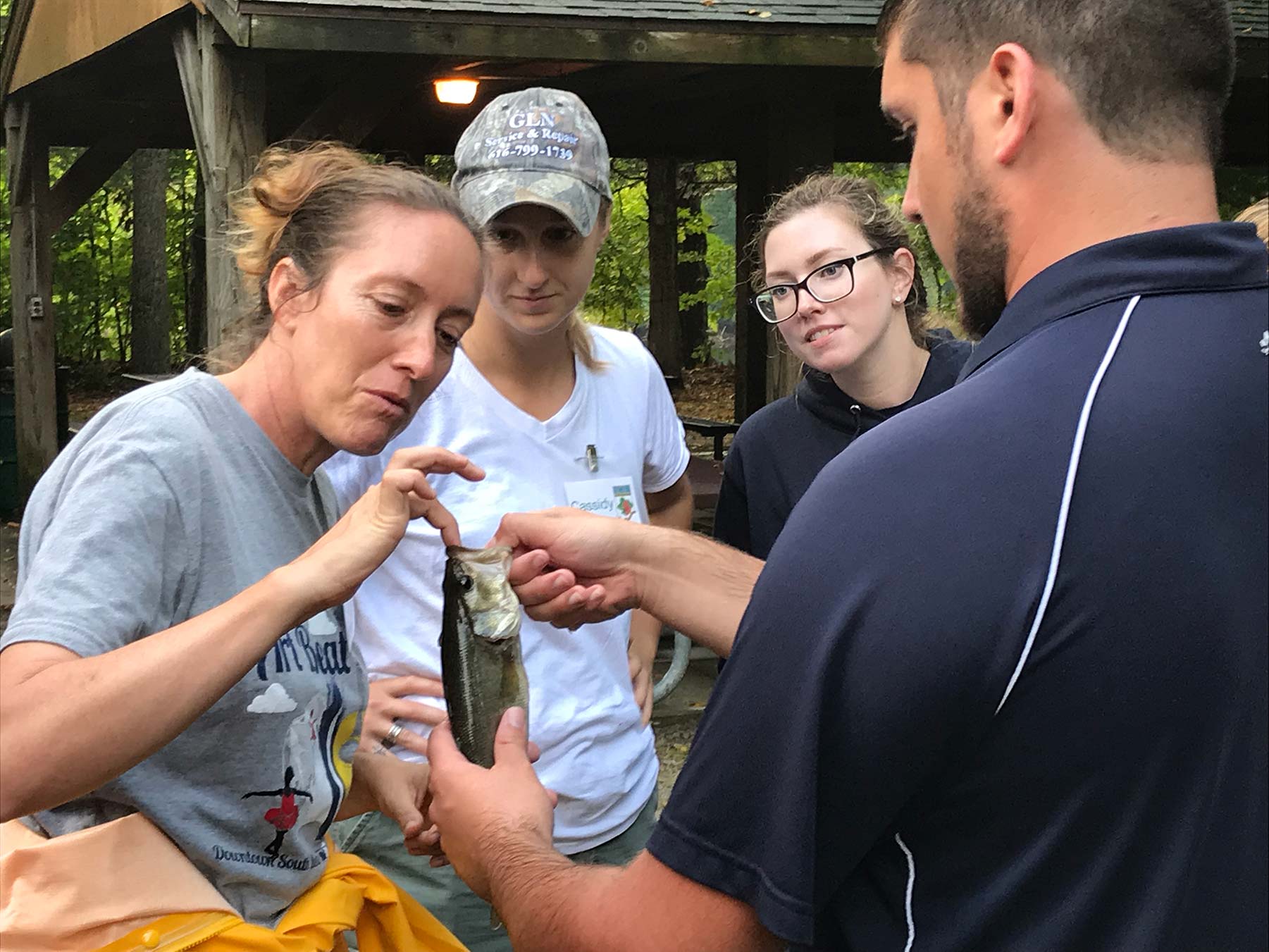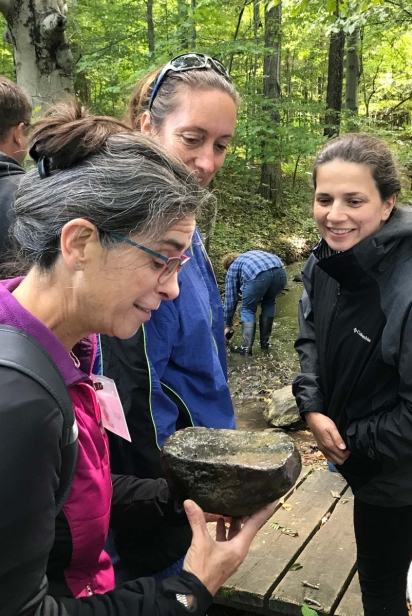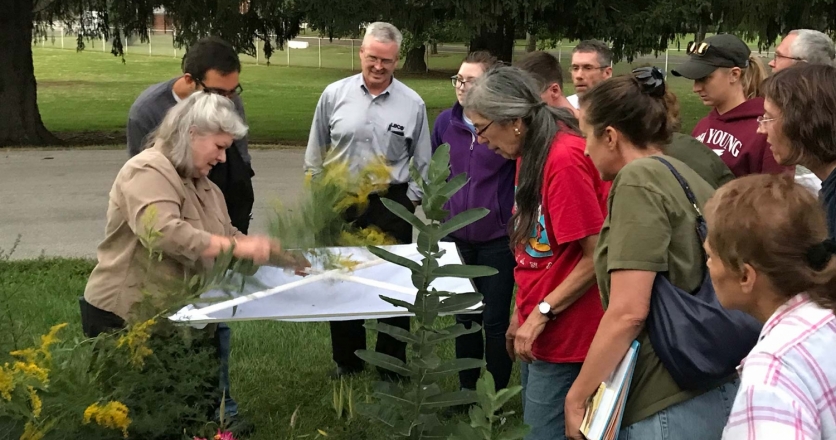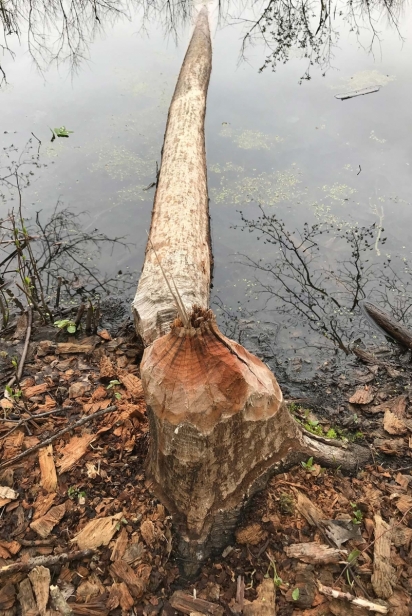Indiana Master Naturalist program cultivates a sense of wonder
Have you ever peered deep into the tooth-ringed maw of a chestnut lamprey while its eel-like body wriggles in the hands of a friendly instructor?
What about admiring the zig-zag stabilimentum zippering through a garden spider’s web, as an arachnid expert enthuses about its cunning design?
Have you sat in a wooded glen, mulling over the mind-blower that there are more organisms in a teaspoon of Indiana soil than there are people on Earth? Well, I hadn’t either until I participated in the Indiana Master Naturalist (IMN) program.
I signed up for the IMN program on a whim. I’d been in a bit of a funk, craving something new, when a two-inch newspaper brief about the course caught my eye. I circled it, lassoed my spouse into joining me and made the registration call to the St. Joseph County Parks office, just like that.
The mission of the IMN program is “to bring together natural resource specialists with adult learners to foster an understanding of Indiana’s plants, water, soils and wildlife, and promote volunteer service in local communities.”
During our first class in the cozy paneled Bendix Woods nature center, it became clear that the state’s natural resources include us, the “adult learners.” As we fastened on name tags and began shyly moving through a nature-themed icebreaker, I could see that we brought our own biodiversity to the informal classroom. Our ages spanned decades, and our life experiences—from South Bend to South America to Africa—included dozens of professional backgrounds, avocations and interests. Shedding our grown-up outfits, we showed up to class each week in jeans and jackets, yearning to walk on the wild side.
Twentieth-century naturalist writer Rachel Carson described this yearning as “The Sense of Wonder” in her book by the same name. She claimed, “If a child is to keep alive his inborn sense of wonder … he needs the companionship of at least one adult who can share it, rediscovering with him the joy, excitement and mystery of the world we live in.”
Each week, our talented instructors kindled this sense of wonder about spiders, fish, soil, birds, trees and ferns, wildflowers and water ecosystems—and so much more. Sharing the delight in discovery with fellow learners heightened the joy, in just the way that the pleasure of a memorable meal is sweetened by companions you savor it with.
The course topics are nutritious and varied, starting with an appetizer of taxonomy, the classification system that helps us make sense of nature’s complexity: kingdom, phylum, class, order, family, genus, species. If you’re a Homo sapiens who loves words, this stuff is delicious and full of fun facts: Did you know that we primates share a class, if not an order, with the fluffy-tailed Rodentia that hassle the chickadees at your feeders?
The IMN aim is appreciation rather than memorization. We students were invited to wonder, for example, at the head-spinning truth that there are 350,000 species of beetles, each with its own name.
Classmate Linda Raven, a radical life coach and self-described “tree-hugger,” reported that while she was not surprised the forestry expert would help her “look at the incredible beauty and magic of trees with a new sense of awe,” she was skeptical the spider expert would be able to do that; “but she did, and then some!” Praising all the instructors we met over our weeks together, Raven recalled Maya Angelou’s insight, “At the end of the day, people won’t remember what you said or did. They will remember how you made them feel.” Sparking wonder is these instructors’ superpower.
Paige Risser, director of communications and marketing for Indiana University South Bend, echoed this sentiment. She recalled our rain-soaked evening at St. Patrick’s County Park, stroking the textured and gooey bodies of bass, pike and eels briefly taken from the St. Joe River for our lesson. “Hearing experts who clearly knew so much about their subjects and had such reverence for their discipline was moving,” Risser says. The IMN class forever changed her understanding of the glacial impacts on our local topography, she says. “I never walk up the big hill in Wooded Estates without mentioning that it’s a stalled sand dune to whomever is unfortunate enough to be in earshot.” She jokes, but the course really does turn a person into a habitual enthusiast.
In our final class, we practiced leading a nature hike at Ferrettie/Baugo Creek County Park, honing an interpretive naturalist’s skills of unleashing oohs and ahhs from students just learning to look. There will always be more to learn. The IMN Program offers locals—like you!—the resources and confidence to keep on wondering, and sharing that joy. Going wild, it turns out, feels wonderful.








